9 Best Card Games For Kids
It all started on a rainy Sunday afternoon.
The kids were restless, bouncing off the walls, and I was desperately searching for a way to keep them engaged without resorting to screen time.
As I rummaged through the game cabinet, I stumbled upon an old, slightly worn deck of cards. I could see the intrigue in their eyes as I began to shuffle.
It was a simple gesture that quickly turned into a full-blown family tournament of Go Fish. The laughter, the competition, and the pride on my youngest’s face when she won—it reminded me that sometimes the best activities don’t have to be flashy or expensive.
A simple deck of cards can bring the whole family together, creating memories that last.
If you’re looking for some of the best card games for kids to keep them entertained and even sneak in some learning, here are a few must-haves that we’ve tried and loved in our home.
Heads up: This post may include affiliate links. As an Amazon Associate, I earn from qualifying purchases—at no extra cost to you. Full privacy policy and disclosure here.
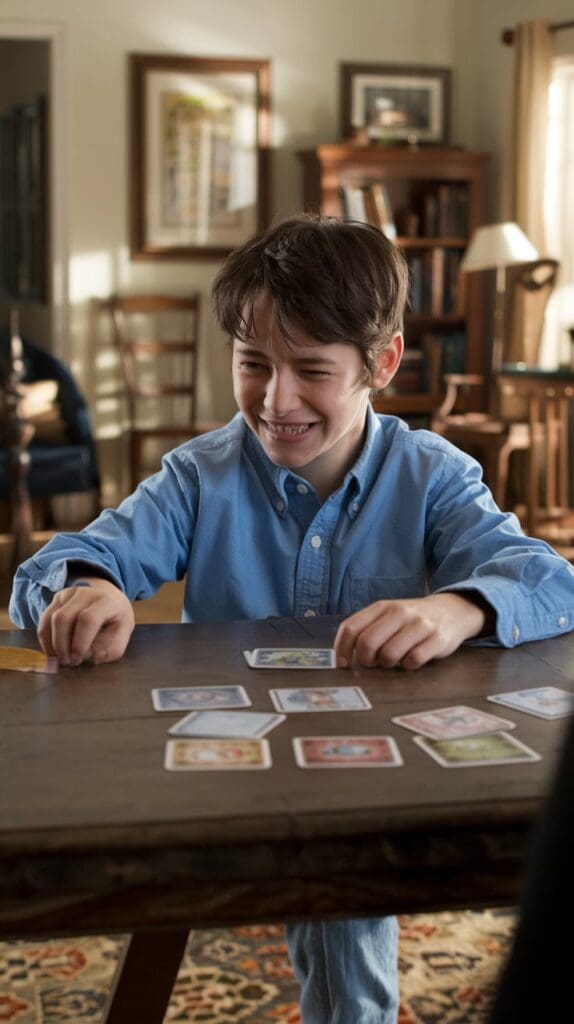
Card Games For Kids
1. UNO
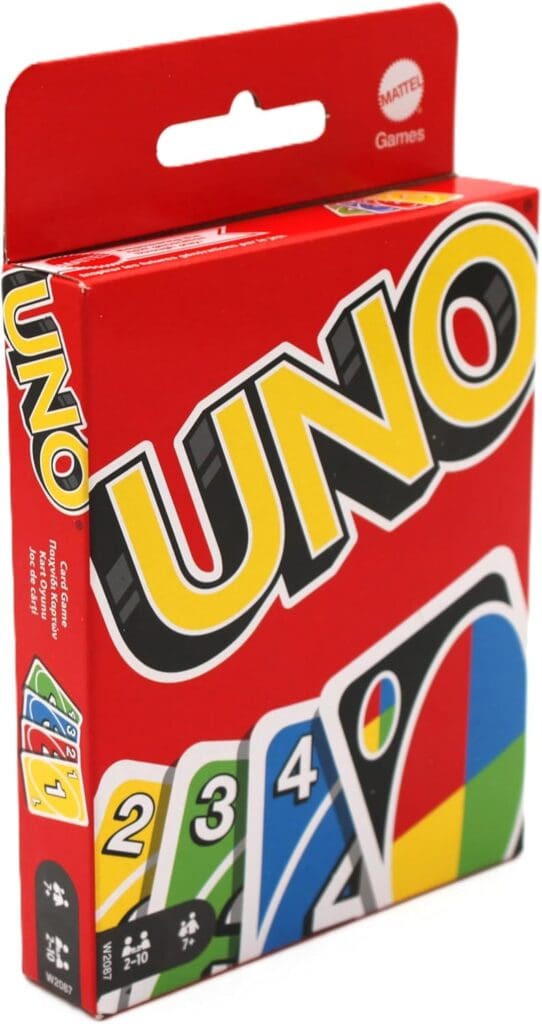
A classic for a reason! UNO is one of those games that’s easy to pick up but still offers plenty of excitement for kids and adults alike.
There’s something so satisfying about calling out “UNO!” when you’re down to one card and the whole table erupts in suspense.
The game encourages quick thinking and number matching, making it an excellent way to reinforce math skills in a fun, low-pressure way. You can grab your UNO Card Game Set here for a quick win on family game nights.
2. Spot It!
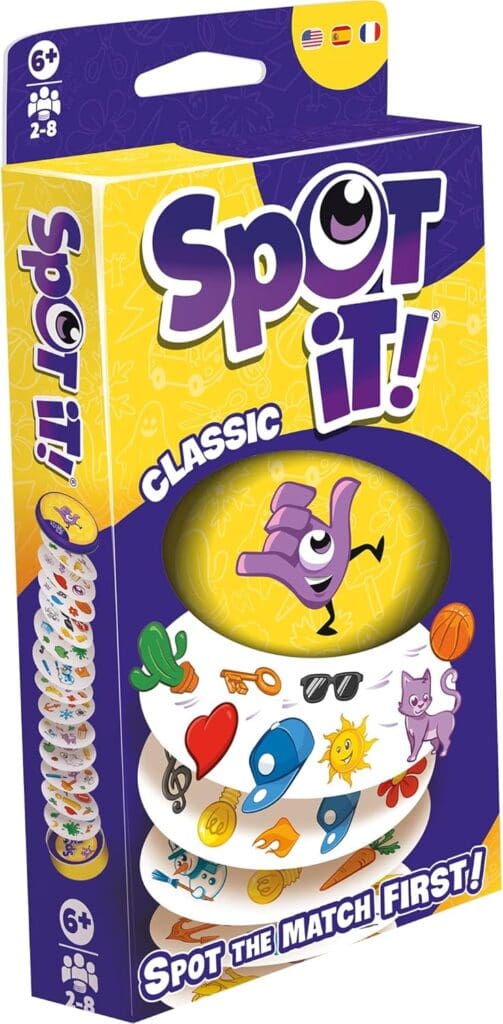
If your family is anything like mine, then you know kids love games that test their observation skills.
Spot It! is perfect for quick bursts of fun, with each round lasting just a few minutes. The goal is to find matching symbols on different cards faster than your opponents, and it’s amazing to see how quickly kids can catch on and even beat the adults.
I highly recommend this one for younger kids who are still working on building their visual perception skills. Check out Spot It! for a game that’s sure to be a hit.
3. Sleeping Queens
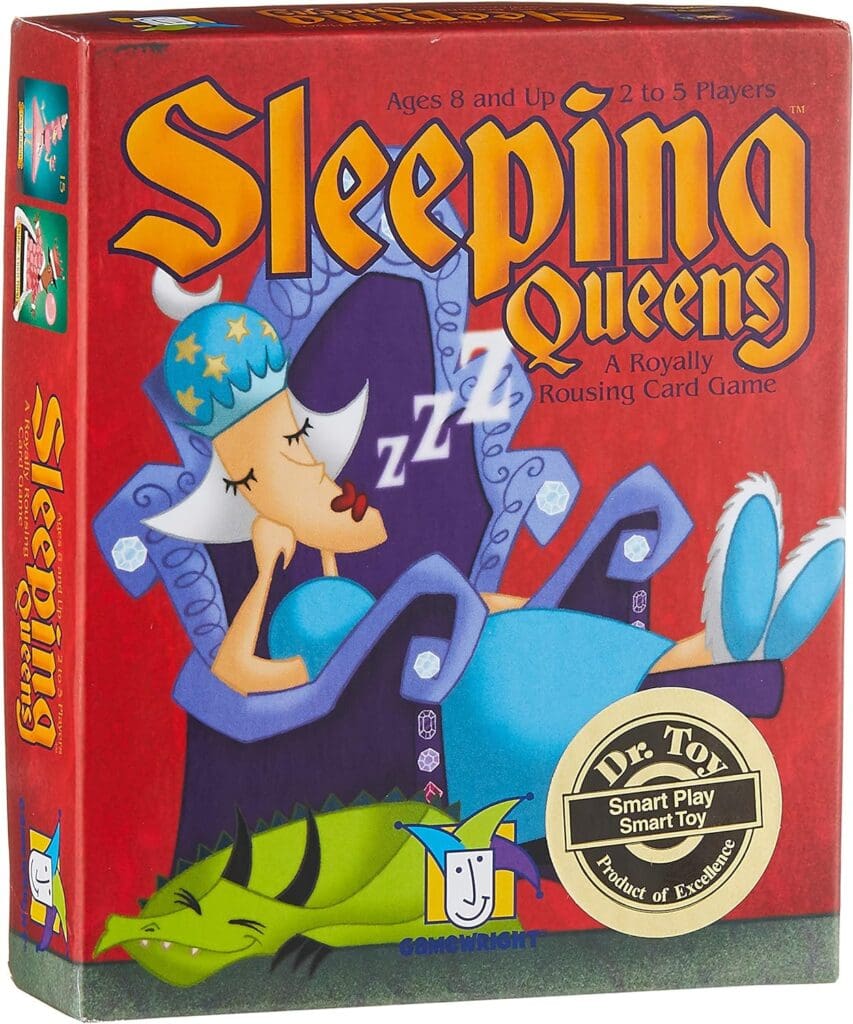
My daughter went through a phase where she wanted to be a princess all the time. That’s when we discovered Sleeping Queens, a whimsical card game that quickly became her favorite.
Designed by a 6-year-old, the game’s goal is to wake up the sleeping queens with kings and rescue them from knights using dragons. It’s a delightful mix of strategy and chance, making it perfect for sparking imaginative play.
Get Sleeping Queens here to add a touch of magic to your card game collection.
4. Rat-A-Tat Cat
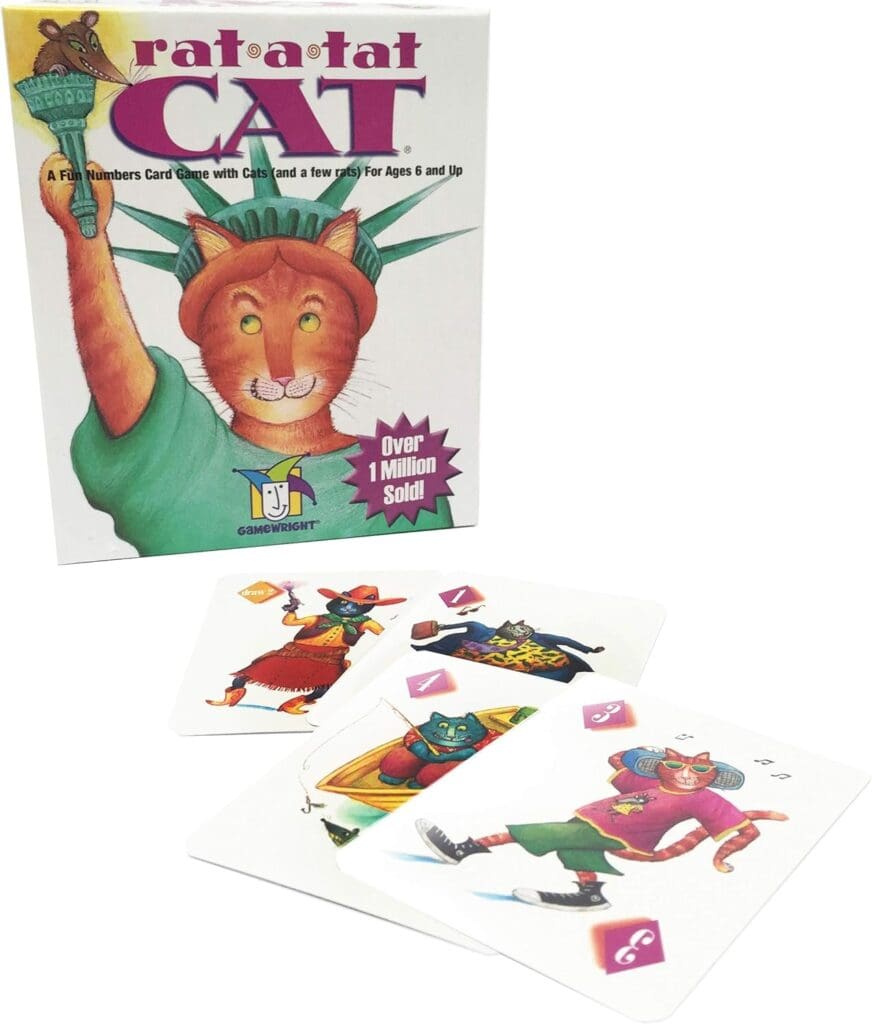
This game is great for teaching kids memory and basic math skills, wrapped up in a fun cat-and-mouse theme.
The objective is to collect cards with the lowest points while swapping and peeking at others.
The suspense of sneaking a peek at another player’s card is always a hit, and it’s easy enough for even younger kids to play. Grab Rat-A-Tat Cat here to get your little ones practicing their numbers.
5. Skip-Bo Junior
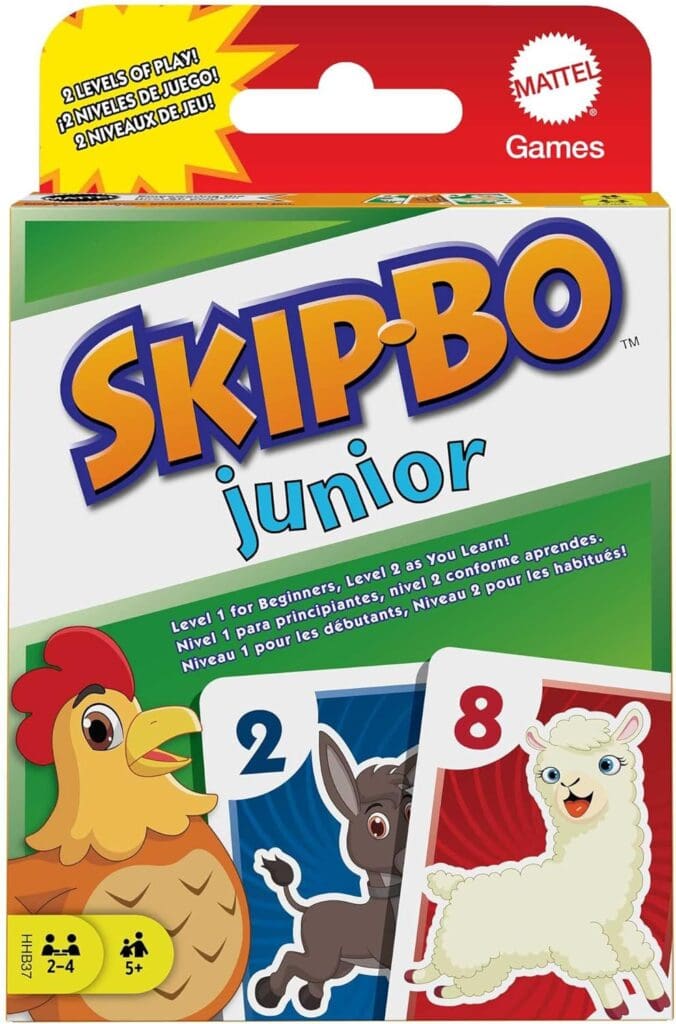
For kids who are just getting the hang of sequencing, Skip-Bo Junior is a fun and educational pick.
It’s a simplified version of the original Skip-Bo, making it more accessible for younger players.
The game helps children learn to order numbers, develop patience, and practice taking turns. If you’re looking for a game that you can enjoy with your preschooler, check out Skip-Bo Junior.
6. Exploding Kittens
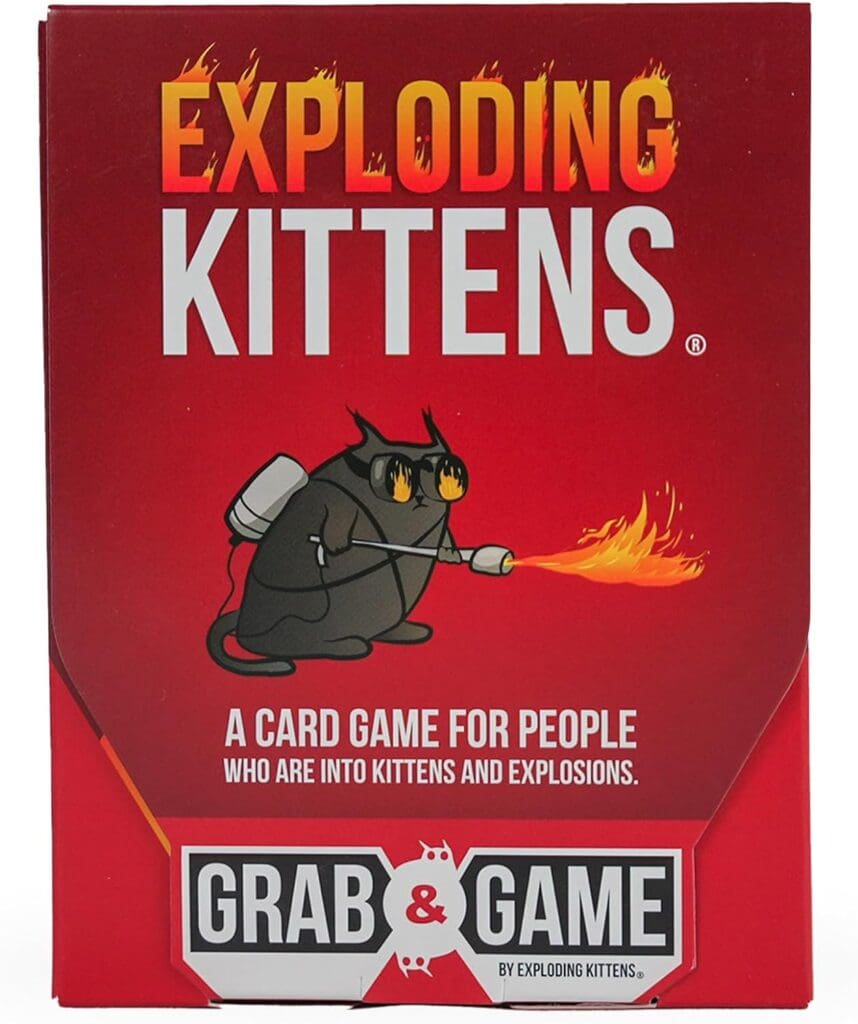
This one’s for the kids who love a little silly humor mixed in with their games. Exploding Kittens is a lighthearted and slightly chaotic game that has kids giggling every time we play.
With adorable illustrations and an element of surprise, it’s a unique card game that’s become a family favorite.
They even have a kid-friendly version of Exploding Kittens that tones down some of the original game’s quirks, making it a good option for younger children.
7. Old Maid
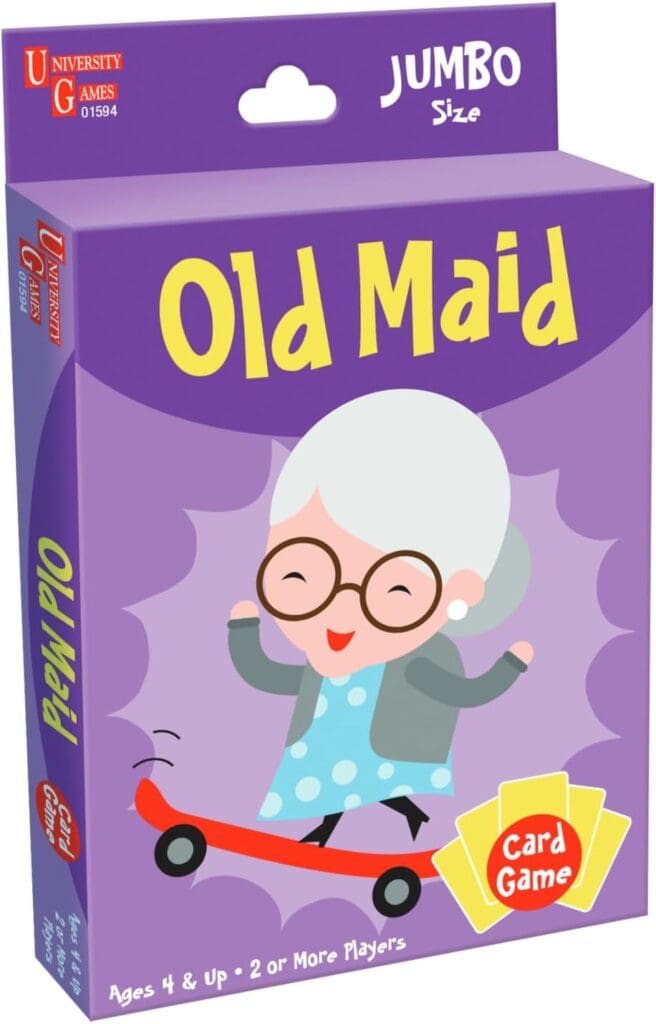
You can’t go wrong with a classic! Old Maid is simple, straightforward, and something even the youngest players can get into.
It’s a great first card game to introduce kids to taking turns, following rules, and, of course, practicing their poker faces.
There’s a variety of colorful, themed versions out there, but I love the timeless charm of a traditional Old Maid set.
8. Monopoly Deal
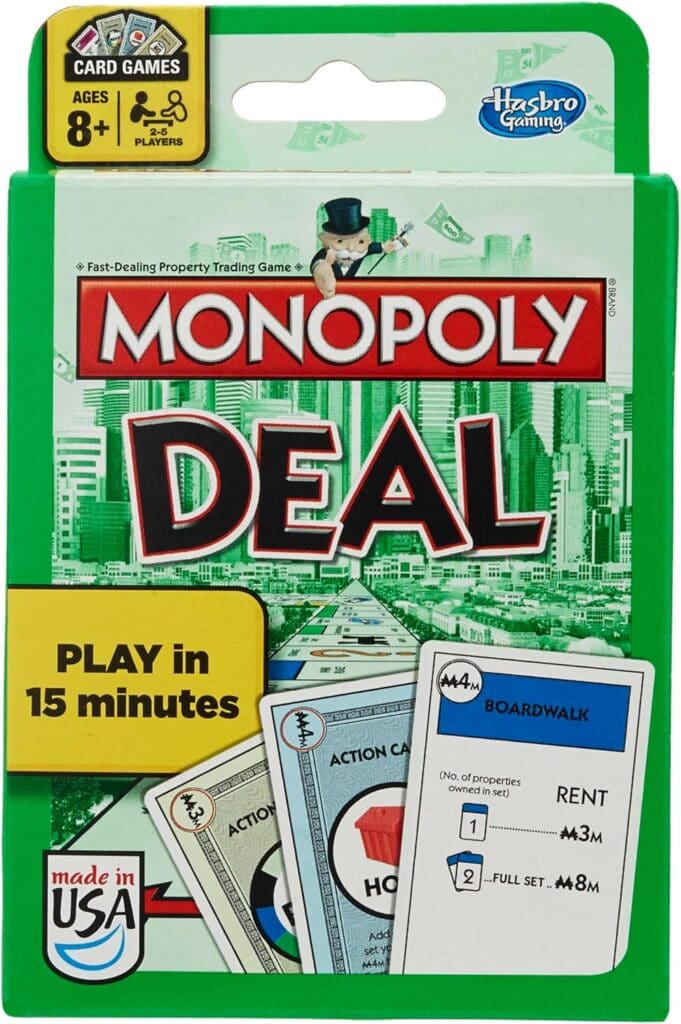
For older kids who are ready for a bit more strategy, Monopoly Deal is an exciting twist on the classic Monopoly board game. It’s a faster-paced, card-based version that’s perfect for those who don’t have time for an hours-long game but still want the thrill of buying properties and collecting rent.
Grab Monopoly Deal if you’re looking to add a little competition to your family game nights.
9. Go Fish
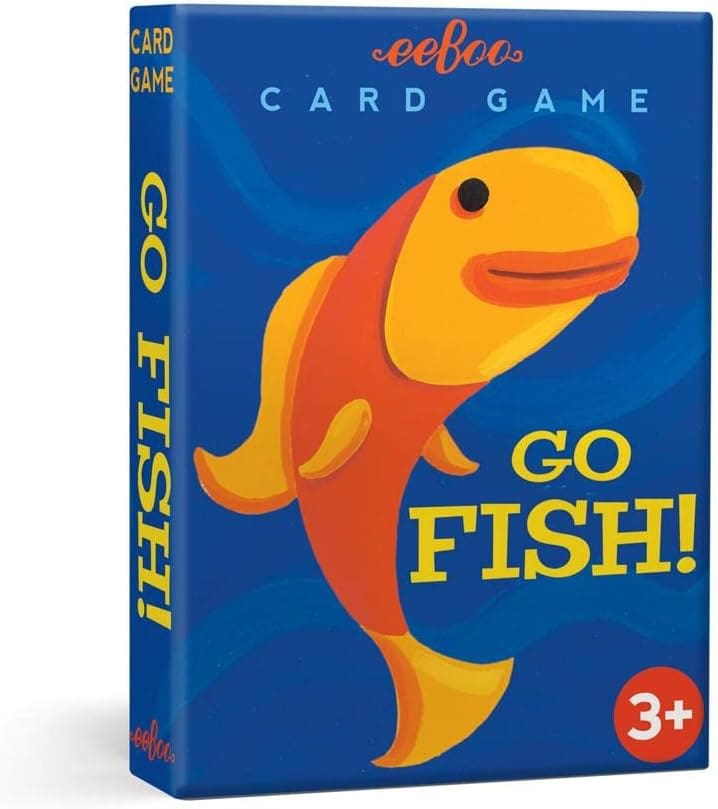
Last but not least, the very game that saved our rainy afternoon—Go Fish. There’s a reason this game has been passed down through generations.
It’s easy for even preschoolers to grasp, and it helps with color and number recognition. Plus, it’s one of the few games where adults and kids can truly compete on equal footing.
Check out a colorful Go Fish set here for a game that will stand the test of time.
Why Card Games Are Worth the Investment
Card games are a fantastic addition to any family game cabinet. Not only are they portable and affordable, but they’re also a great way to build cognitive skills, encourage social interaction, and create screen-free bonding time.
Whether it’s a quick round of UNO before bedtime or a weekend tournament of Exploding Kittens, these card games have a way of bringing everyone closer together.
So the next time you find yourself searching for ways to keep your kids entertained, consider reaching for a deck of cards.
You might just be surprised by how much fun—and learning—a simple game can offer.
Pin for later!
